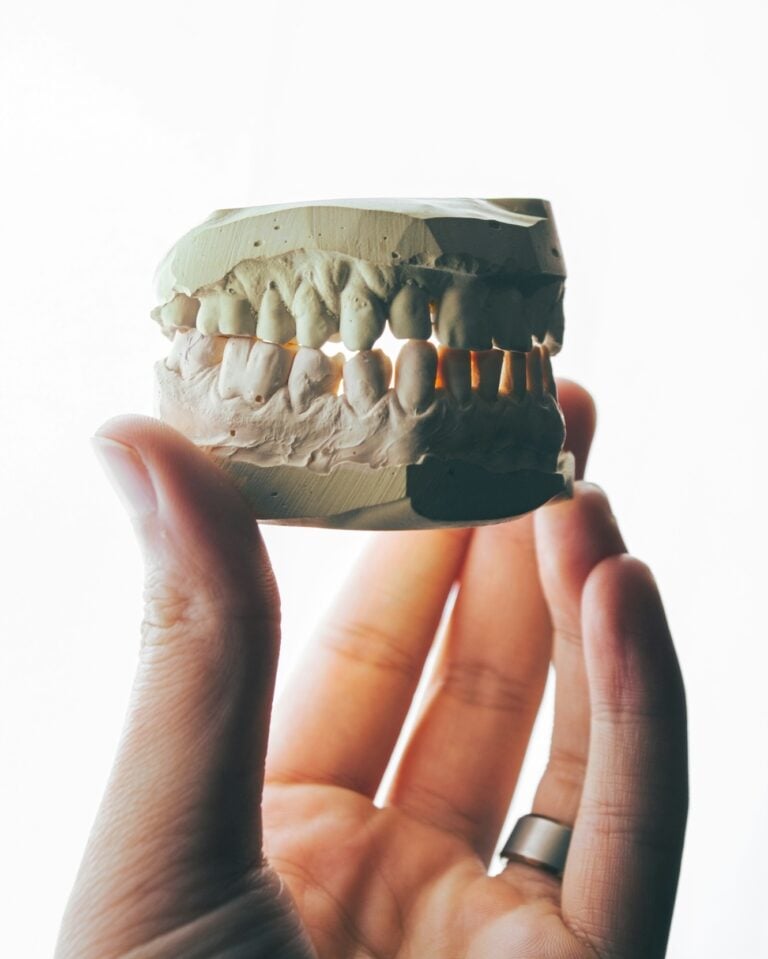Who do you need: an osteopath or a physiotherapist?
For many people, osteopathy and physiotherapy are often thought of as the same thing or confused as to the difference between the two. If you are in pain with musculoskeletal problems, you should know who would best suit your needs: an osteopath or a physiotherapist.
There are, in fact, many similarities between practitioners of the two professions. Both have the same overarching goal of treating people in order to reduce musculoskeletal pain, improve mobility, and improve the quality of their patients’ lives. In addition, both have trained extensively in anatomy, physiology, and pathology.
The main difference between the two is that osteopaths treat with their hands, and physiotherapists tend to treat using exercise and modalities.
Osteopaths consider that all the parts of the body are intrinsically linked and that the body has its own healing mechanisms. Physiotherapists, on the other hand, direct their attention primarily to improving that part of your body that is causing the problem, although they will give advice about lifestyle to improve your general health and techniques to use in order to avoid injury.
The differences can be better appreciated if we consider how the two professions came about.
A brief history of Osteopathy and Physiotherapy
Osteopathy grew out of the medical profession. It was founded in America in the late 1800s by the physician and surgeon, Andrew Taylor Still. His philosophy was that to achieve the best possible health, all parts of the body should be treated together in a harmonious way. Osteopathy eventually made its way to Britain with the foundation of the British School of Osteopathy in 1917. The London College of Osteopathic Medicine was opened in 1946 and offered osteopathic courses to medical professionals. In 1993, it became a legally regulated profession.
Physiotherapy has its origins in various therapy treatments originating thousands of years ago in, among others, China, India, and Greece. Most of these therapies involved exercise in one form or another. The aim of physiotherapy is to treat the particular area of the body which is the source of the pain, rather than the body as a whole. In 1813, Henrick Ling introduced a therapy known as Swedish exercises, and by the 1860s, these exercises included massage and the use of exercise machines. The Chartered Society of Physiotherapy was founded in 1894 in Britain by four nurses; however, it didn’t acquire legal status as a professional organisation until 1900.
Sacks Osteopathy has been helping their patients regain a quality of life and live pain free for almost two decades.
Different Methods of Treatment
If you go to an osteopath, the treatment you will receive will be different from that which you could expect from a physiotherapist.

The Osteopath
The osteopath uses manipulation, massage, and manual techniques to diagnose, treat, and prevent musculoskeletal ailments. They ensure that your bones, muscles, ligaments, and connective tissues function harmoniously and also aim to increase your range of movement and encourage blood flow throughout your body.
At a first meeting, your osteopath will ask you about your specific ailment, general health, and medical history. You can expect them to use their hands to examine you in a process known as palpation. The osteopath will be trying to find areas of strain, weakness, soreness, or limitations on movement, and they may also ask you to perform some movements yourself. Collectively, these steps put your osteopath in a position to analyse the best course of action and treatment schedule. They’ll also give you a chance to ask any questions you might have, and will likely provide you with exercises, movements, or practical advice to take home after treatment.
The treatment technique used by the osteopath will be manual therapy. This means the manual manipulation and massage of different tissues to return your body’s bones and tissues to their proper balance. It may include mobilising your joints to overcome stiffness, massage to relax and release muscle tension, articulation of your joints through a natural range of movement, or manipulation of your spine to massage the soft tissue or loosen the joints of the vertebrae. The osteopath may also apply a muscle energy technique that requires you to push against them while they apply a counterforce. This technique is used to increase the range of motion in a joint. There are numerous similar techniques that your osteopath may consider appropriate.
There is no specific limit to the number of visits, and some patients choose to continue treatment after their primary concerns have been addressed. In general, the length of treatment will depend on your symptoms. Osteopathy generally isn’t available on the NHS, and most people pay privately.
Common types of therapies used by osteopaths
- Soft tissue manipulation: Massaging and stretching muscle and connective tissues to relieve tension and improve circulation. Deep tissue massage is a type of soft tissue manipulation that can reach through multiple layers of tissue.
- Articulation: Repeating a gentle, controlled, and repetitive range of movement. This increases a joint’s range of motion and allows the patient to perform daily tasks pain free.
- Functional techniques: A range of techniques that involve moving the patient’s body into certain positions to release restrictions and ease stiffness. These techniques are often taught to the patient for self-care at home.
- Spinal manipulation: Applying a controlled force to specific vertebrae to improve spinal range of motion and alleviate pain.
In total, osteopaths have more than 40 techniques to call upon. There is also a very high likelihood of your osteopath combining different techniques as part of your unique treatment strategy.

The Physiotherapist
The physiotherapist also uses manipulation and massage for much the same reasons as the osteopath; to improve blood circulation, improve movement, and relieve pain. Physiotherapists may also suggest other treatments, such as acupuncture or ultrasound.
A first visit to a physiotherapist will primarily be an assessment of your general medical history and the history of your specific condition. As part of the assessment, you will probably be asked to perform some movements to show how your condition affects you. Perhaps at the first visit, but certainly on subsequent visits, you will be asked to do exercises and continue them at home. These home exercises form a very important part of the treatment and are a distinguishing difference between physiotherapy treatment and osteopathy treatment.
On subsequent visits to the physiotherapist, there will be follow up sessions for reassessment and for new exercises to be tried out. These exercises are intended to improve movement and strength in the affected part of the body and elsewhere, helping you maintain and increase your ability to perform physical activity. Other treatments sometimes used by the physiotherapist may include acupuncture to reduce pain and increase recovery, transcutaneous electrical nerve stimulation, also to relieve pain, and ultrasound treatment. The use of ultrasound is thought to increase blood flow and cell activity in order to help with the healing process and also reduce pain.
In general, you could expect to have between 5 and 7 physiotherapy sessions. After that, you would be expected to continue exercising on your own, in effect making you responsible for your own care and recovery. Physiotherapy is available on the NHS and your are referred for treatment by a doctor.
The choice is yours. Some people may feel that they would benefit more from the personal attention and individually prescribed course of treatment offered by the osteopath. For others, it may be that they would prefer the physiotherapy route, learn the relevant exercises, and take more responsibility for their own recovery. There is also a third option: to employ the advantages of both osteopathy and physiotherapy.
Common types of therapies used by physiotherapists
- Stretching and resistance exercises: Improves blood flow to affected areas and promotes faster healing. Resistance exercises help build muscle strength and tolerance.
- Electrical Muscle Stimulation (EMS): The use of electrical currents to contract muscles. Used to improve circulation, reduce inflammation, and alleviate pain.
- Physical exercise: Personalised exercise and workout plans targeting specific muscle groups or parts of the body allow patients to recover and regain strength at their own pace.
- Cryo (cold) and heat therapy: Cold therapy reduces inflammation, numbs pain, and decreases muscle spasms by constricting blood vessels in a specific area. Heat packs dilate blood vessels, enhancing tissue elasticity and flexibility.
As with osteopaths, physiotherapists may rely on any combination of treatments to address your medical concerns.
Combining osteopathy and physiotherapy: Is it right for you?
While this is heavily case-dependent, there are people who benefit from a combination of physiotherapy and osteopathy. This is especially true for individuals dealing with chronic musculoskeletal issues, multiple sports injuries, or other conditions that affect multiple areas of the body. For instance, someone recovering from a serious vehicle accident could benefit from osteopathic techniques that relieve pain and help reset the body’s natural alignment, as well as physiotherapy exercises that safely strengthen injured muscles and help regain functionality.
In theory, any injury or ailment that would benefit from either type of therapy would benefit from both. This includes sports injuries and muscle pain, back pain, joint pain, and nerve pain. Ensure that you inform both your physiotherapist and osteopath that you are receiving treatment from the other. They will most likely try to schedule your sessions with rest days in between sessions and/or work on a coordinated strategy for your recovery.








